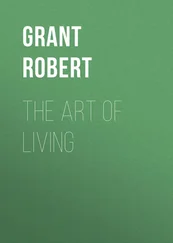Unfortunately, the sculptors won’t have any of this. They do not, so it seems, comprehend our age of noise and movement. If they represent a man in civilian clothes, he sits motionlessly in a chair or stands there, his hand stuck in between the second and third button of his jacket. Sometimes he also holds a scroll in his hand, and no expression flutters across his face. He generally looks like one of the acute melancholics in the mental hospitals. If people were not oblivious to monuments and could observe what was going on up there, they’d shudder when passing, as you do beside the walls of a madhouse. It is even more frightening when the sculptors depict a general or a prince. His flag is waving in his hand, and there’s no wind. His sword is drawn and no one draws back in fear. His arm motions imperiously forwards, and no man would think of following him. Even his horse, rearing, with sprayed nostrils, ready to jump, remains balanced on his hindlegs, astonished that the people down below, instead of stepping aside, quietly stuff a sandwich into their mouths or buy a paper. By God, the figures in monuments never make a move and yet remain forever frozen in a faux pas. It is a desperate situation.
I believe that I have in these remarks contributed a little something to the understanding of monument figures, memorial plaques, and the like. Maybe someone or other will henceforth look at them on his way home. But what I find ever more incomprehensible, the more I think about it, is the question: Why then, matters being the way they are, are monuments erected precisely for great men? This seems to be a carefully calculated insult. Since we can do them no more harm in life, we thrust them with a memorial stone hung around their neck into the sea of oblivion.
The Paintspreader
If over the course of the years you are compelled to pass through painting exhibitions, then surely one day you are bound to invent the term paintspreader. He is to the painter what the penpusher is to the poet. The term gives order to a hodgepodge of disparate phenomena. Since the beginning of our reckoning of time penpushers have lived off adaptations of the ten commandments and a few fables handed down to them by antiquity; the assumption that paintspreading is likewise based on a few fundamental principles is not therefore altogether out of the question.
Ten such principles would not be too few. For if you apply ten artistic principles effectively, that is, combined in alternating order, the result, mistakes in calculation notwithstanding, is three million, six-hundred twenty-eight thousand, and eight hundred different combinations. Each of these combinations would be different from the others, and all of them nonetheless still the same. The connoisseur could spend his life counting: one-two-three-four-five. ., two-one-three-four-five. ., three-two-one-four-five. ., and so on. Naturally the connoisseur would be indignant and would perceive this as a threat to his accomplished abilities.
It also seems that after several hundred thousand paintspreaders the whole business would become ridiculous, and they would then switch artistic “directions.” You can see what an artistic direction is the moment you set foot in an exhibition hall. You would be more hard-pressed to recognize it if you had to pass before a single solitary painting; but spread over many walls, artistic schools, directions, and periods are as easily distinguishable, one from another, as wallpaper patterns. On the other hand, the theoretical underpinnings of these various schools, directions, and periods usually remain unclear. This is by no means meant as a slight upon the paintspreaders; they produce honest work, are well-versed in their craft and are personally, for the most part, distinctive fellows. But the production statistics level out all differences.
We do, however, have to acknowledge one disadvantage that works against them: the fact that their paintings hang openly on the wall. Books have the advantage of being bound, and often uncut. They therefore stay famous longer; they maintain their freshness, and fame, after all, begins at that point at which you have heard of something but are not familiar with it. The paintspreaders, on the other hand, have the advantage of being more regularly sought out and “written up” than the penpushers. If it weren’t for the art market, how difficult it would be to decide which work you prefer! Christ, in his day, drove the dealers out of the Temple: I, however, am convinced that if you possess the true faith, you must also be able to sell it; then you could also adorn yourself with it, and then there would be a great deal more faith in the world than there is now!
Another advantage enjoyed by painting is that there is a method to it. Anyone can write. Perhaps everyone can paint too, but this fact is less well known. Techniques and styles were invented to envelop painting in a shroud of mystery. Not everyone can paint like someone else; to do that, you have to first learn how. Those elementary school children so rightfully admired nowadays for their painting talents would flunk out in any art academy, but the academic painter must likewise take great pains to unlearn his acquired technique in order to drop his conventions and draw like a child. It is, all in all, a historic error to believe that the master makes the school; the students make it!
If we examine the matter more closely, however, it is not true either that anyone can write; quite the contrary, nobody can — everyone can merely take dictation and copy. It is impossible that a poem of Goethe’s could come into being today; even if by some miracle, Goethe were to write it himself, it would still be an anachronistic and in many ways dubious new poem, even though a splendid masterpiece of old! Is there any other explanation for this mystery than that this poem would not seem as though it had been copied from any contemporary poem, except perhaps for those poems that were themselves copied from it? Contemporaneity always means copying. Our ancestors wrote prose in long, beautiful sentences, convoluted like curls; although we still learn to do it that way in school, we write short sentences that cut more quickly to the heart of the matter; and no one in the world can free his thinking from the manner in which time wears the cloak of language. Thus no man can know to what extent he actually means what he writes, and in writing it is far less that people twist words than it is that words twist people.
Is it possible then too that not everyone can paint after all? Clearly, the painter cannot, not in the sense that the paintspreader associates with the word. The painter and the poet are above all, in the eyes of their contemporaries, those who cannot do what the paintspreaders and the penpushers can do. This is why so many penpushers consider themselves poets and so many paintspreaders painters. The difference usually only becomes apparent once it’s too late. For by that time, a new generation of pushers and spreaders have come of age who already know what the painter and the poet have only just learned.
This also explains why the painter and the poet always appear to belong to the past or the future; they are forever being awaited or declared extinct. If, however, on occasion, one actually happens to pass for the real thing, it isn’t always necessarily the right one.
A Culture Question
Can you tell us what a poet is?
This question ought some time to appear in one of those intellectual competitions in which people dispute the issue: “Who murdered Mr. Stein? (in the novel whose serialization begins in tomorrow’s Sunday supplement)” Or: “What should Roman-three do, if Roman-one makes a different play from the one suggested in the last bridge congress?”
It is not, however, to be expected that a newspaper would readily follow this suggestion, and if it did, then the editors would phrase the question in a more engaging manner. Like this, for instance: “Who is your favorite poet?” But also like this: “Who in your opinion is the greatest contemporary poet?” and “What was the best book of the year?” (Also: “of the month?”) Such questions seem to suggest themselves because of their stimulating effect.
Читать дальше











